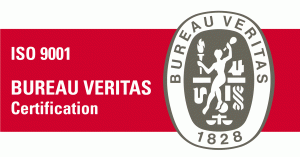Author: Nuri Andarwulan, Siti Madanijah, and Zulaikhah
ABSTRACT
Survey from National Agency for Drug and Food Control (BPOM) on the condition of school children foods (SCF) showed that many microbial contaminations and hazardous chemicals, and also misused of food additives. This study aimed to know the profile of the safety on school children foods in Indonesia, reviewed from the chemical and microbiological parameters. Safety of SCF sampling was conducted in 1328 elementary schools which is part of the 4500 elementary school in 18 provinces where the previous survey was conducted. Selection of sampling locations and types of food was based on purposive sampling technique. School children foods samples were analyzed by chemical and microbiological methods. Food which are sold in most school surrounding are snacks (54.1%), drinks (26.0%) and main food (2.0%). Of SCF groups sold, more than half (55.8%) SCF are registered as ready-to-eat food, and the next 36.0% are registered as domestic brand (MD). The results of chemical analysis on the main food showed that 12.9% and 9.7% of food samples were positive for formaldehyde and borax respectively. Of the snacks tested, 16.0% of samples were positive for formaldehyde and 9.1% positive for borax, 2.2% positive for Rhodamin B, 0.4% and 1.4% were positive for Methanyl Yellow and Amaranth respectively. The analysis results in the drinks also showed that they contained Rhodamin B, Methanyl Yellow and Amaranth at concentrations of 4.0%; 3.7% and 5.0% respectively. Based on the results of benzoate in drinks, as many as 3.8% of samples did not comply with he standard, whereas cyclamate analysis showed that 7.0% of samples did not comply with the standard. The results of microbiological analysis of main food samples showed that as many as 45.9% of food samples are of poor quality. Meanwhile, there were 32.6% of food samples contained of Staphylococcus aureus. The total plate count on snack food showed that as many as 27.8% of food samples contained microorganisms above the standards, and Staphylococcus aureus was found in 16.0% of those food samples. Based on the total plate count of drink samples, 9.5% of samples were of poor quality. Based on E. coli analysis, it was found that 69.0% of samples did not comply. The exposure value of cyclamate and benzoate in school children foods is still lower than the ADI value and the number of school children foods which were not complying with standards was less than 10% of school children foods samples.



